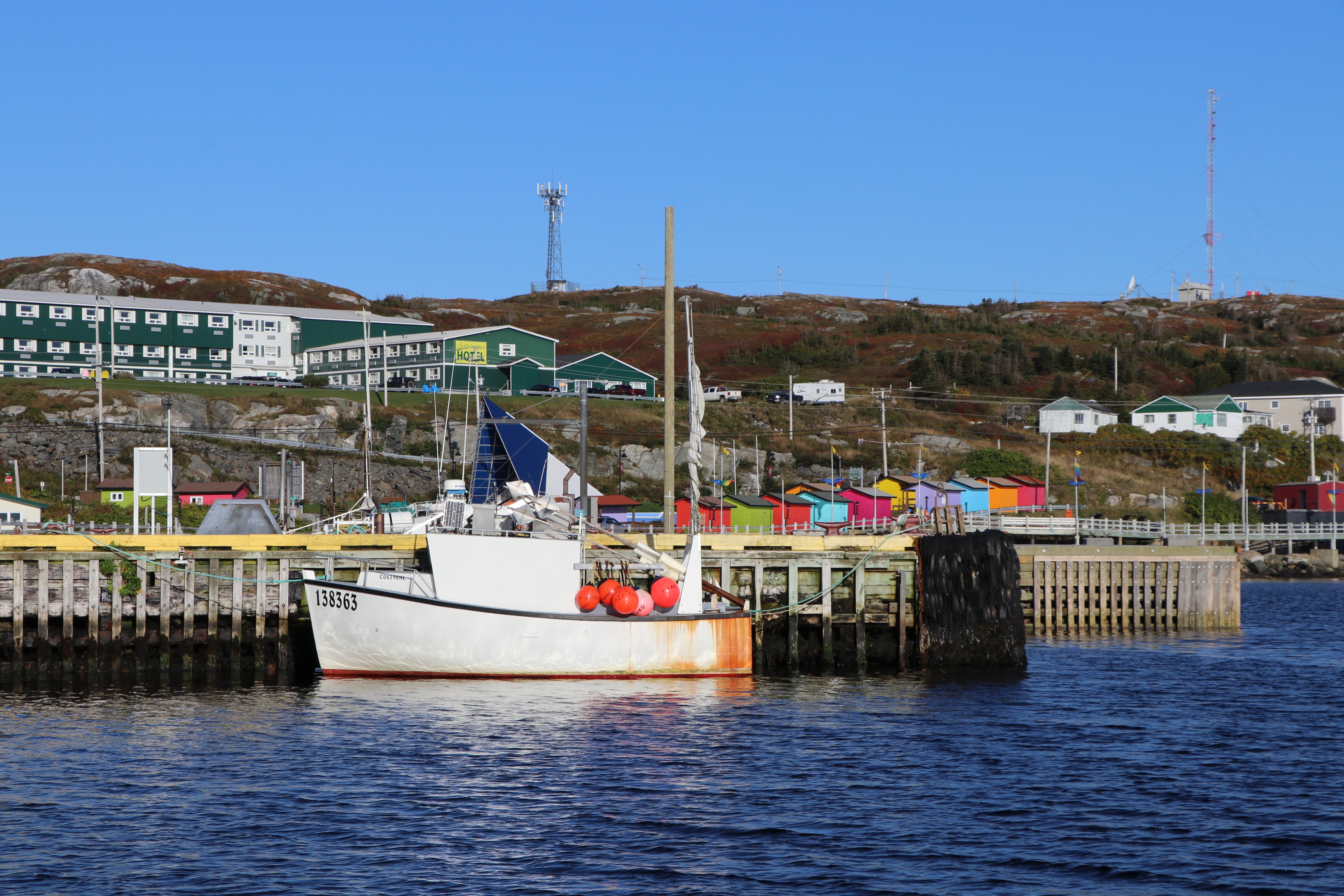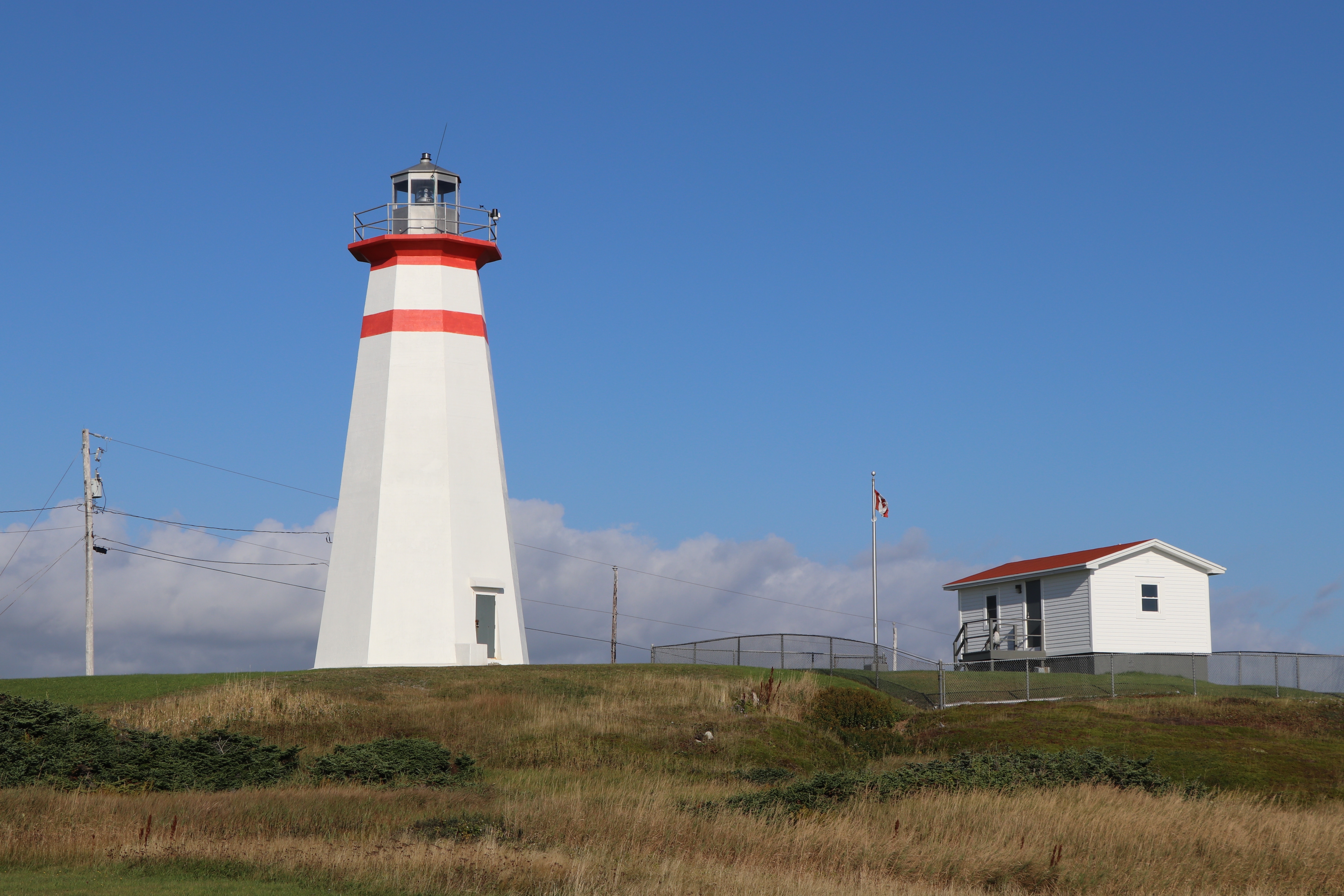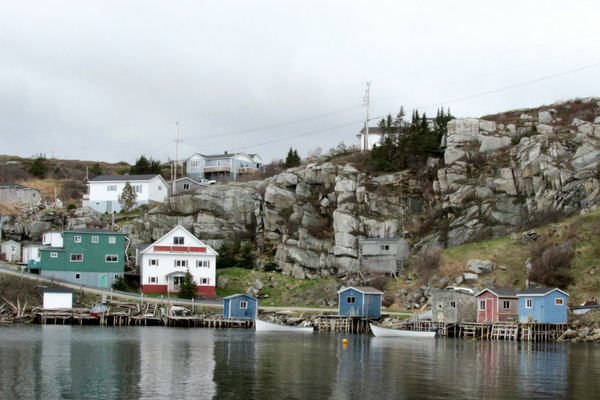Wreckhouse
The Wreckhouse, located approximately 20 kilometres northwest of Port aux Basques, is the home of some of the strongest winds of the world. Southeast winds funneling down from the 1700-foot Long Range Mountains reach speeds of up to 150 km/hr, playing havoc with transportation in the area. In the past, the high winds blew rail cars completely off the tracks, which ran at a right angle to the direction of the wind. Although the trains no longer run through the Wreckhouse, Transport Trucks who do not pay attention to the wind warning usually take the damage from the storm.
Grand Bay West Schist
The schist was formed by metamorphism of Cambrian or Ordovician sedimentary rocks, probably in Silurian time. It is medium to coarse grained and contains an interesting mix of metamorphic minerals. To see the schist, take the Grand Bay West road off of the Trans-Canada Highway and continue to just before the bridge to Grand Bay East. Turn west on a short paved road and drive beyond the houses and pavement toward the beach, then turn south on or above the beach to a point where the schist outcrops. In the beach outcrop, the schist contains bladed networks of shiny black hornblende, bluish kyanite crystals up to 1 cm long, red garnets up to .5 cm in diameter, staurolite, pyrite, chalcopyrite, and white and black mica. White quartz veins are broken apart and mineral bands are folded. A less varied mix of minerals can be seen in outcroppings located at the sandy beach, just beyond the end of the pavement.
Horizontal Wave Forest
Strong baffling winds, which are common to the region, have created a rare natural phenomenon known as a Horizontal Wave Forest. It is located on a hillside on the Trans-Canada Highway, east of the Cape Ray exit near Bear Cove Brook. The hillside has a wavy horizontal appearance, as if some of the trees were completely cleared. However, this look has been caused by strange wind patterns that leave some areas of the hillside with no trees at all, while other areas have an abundance. On a windy day, a visitor can stand in the shelter of the trees and feel only a light breeze, while in a nearby area of no trees, the wind can gust to over 100 kilometres per hour. There is a great view of this remarkable wonder from atop Table Mountain, which is just opposite the wave forest.








